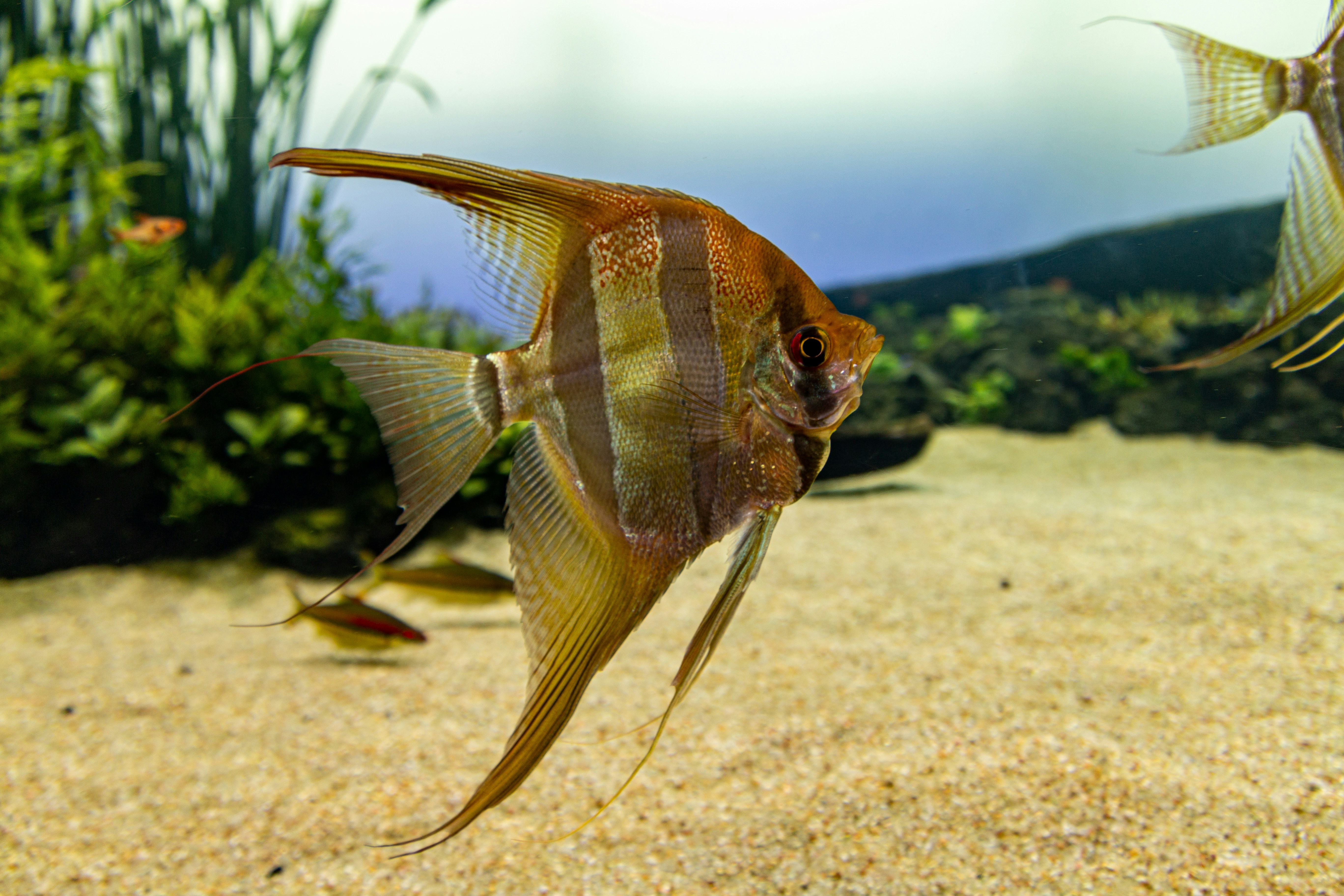Essential Care Tips for Angelfish – Understanding an Angelfish
Essential Care Tips for Angelfish. Angelfish are not just visually stunning but also require proper care to thrive in a home aquarium. Understanding their needs is crucial for both novice and experienced aquarists. These fish are known for their elegant fins and graceful swimming style. Providing the right environment is the first step in ensuring their health and longevity.
Essential Care Tips for Angelfish – Setting Up the Perfect Environment
Creating an optimal environment for your angelfish involves careful consideration of tank size, water conditions, and decorations. A minimum tank size of 20 gallons or 75 liters for one pair is recommended, as angelfish can grow quite large. Ensure the water temperature ranges between 76°F and 82°F or 24–28°C (warm water), with a pH level similar to goldfish between 6.5 and 7.5. Filtration should be effective but gentle, as angelfish are sensitive to strong currents.
Essential Care Tips for Angelfish – Feeding Your Angelfish
Feeding plays a significant role in the overall care of angelfish. A balanced diet will help maintain their vibrant colors and health. Similar to goldfish, angelfish are omnivores. Offer a variety of foods, including high-quality flakes, pellets, and occasional frozen or live options like brine shrimp and bloodworms. Add live food for the haunting instinct. Feed blanched spinach or peas (helps with digestion). Avoid overfeeding, which can lead to obesity and water quality issues.
Regular water changes, proper filtering, and a balanced diet are key aspects when learning how to care for angelfish. With attentiveness and the right knowledge, your angelfish can flourish and become a beautiful addition to your aquarium for years to come.
Types of angelfish
There are various types of angelfish:-
1. Silver Angelfish (Wild Type)
2. Zebra Angelfish
3. Veil Tail Angelfish
4. Marble Angelfish
5. Koi Angelfish
6. Black Angelfish
7. Gold Angelfish
8. Albino Angelfish
9. Half-Black Angelfish
10. Blushing Angelfish
Restrictions for keeping a goldfish
Avoid Fin-nippers (e.g., Tiger Barbs), also avoid very small fish and other aggressive fish like Oscars. Never do 100% water changes; change only 25–30% weekly.
Maintenance for angelfish
Maintaining an aquarium of angelfish is crucial for their survival. Water should be changed weekly, about 25 to 30% also clean the tank glass and substrate regularly. Use a dechlorinator when using tap water. Maintain good oxygenation (airstone or filter output). Ammonia or Nitrite should be 0 ppm. Use a liquid test kit weekly.
Common issues to watch for
See if there are any fin-nipping tank mates. Watch if there are any black patches or rot, it is caused due to Poor water quality (check ammonia/nitrites). See for gasping at the surface, this is because of Low oxygen or high ammonia. See for clamped fins or no movement; this is because of stress or temperature shock.
Lifespan of angelfish
The average lifespan of angelfish in well well-maintained aquarium is 8 to 10 years. With excellent care can live up to 12 years or slightly more. Water quality is most crucial for their lifespan; poor water quality shortens the lifespan of angelfish. Diet also plays a main role in the lifespan of angelfish; varied high quality food leads to a longer lifespan of angelfish. Maintaining a stable temperature, avoiding fluctuations, and maintaining a 24–28°C temperature is ideal. Aggressive fish can stress or injure them. Do regular observation and quick treatment for any disease.
Decorations for angelfish
Add tall plants (real or artificial) to mimic their natural Amazon habitat. Include broad-leafed plants or vertical slate—they’ll lay eggs on them if they pair up. Avoid sharp decor that may damage their long fins. Angelfish love hiding spots: Add plants, driftwood, or rock structures. Don’t overcrowd—they need swimming space.
